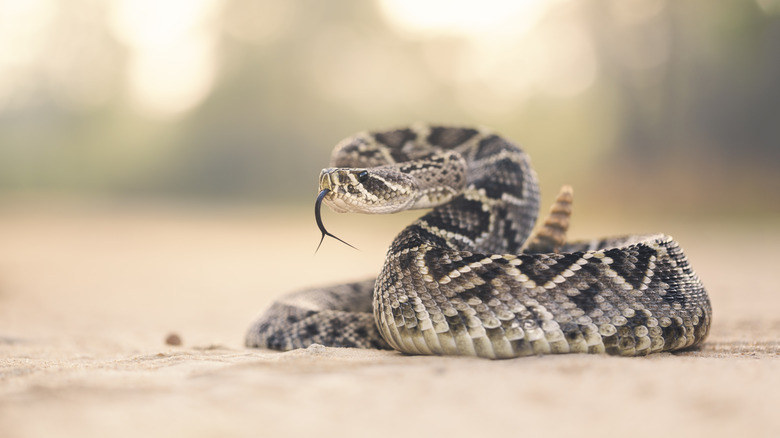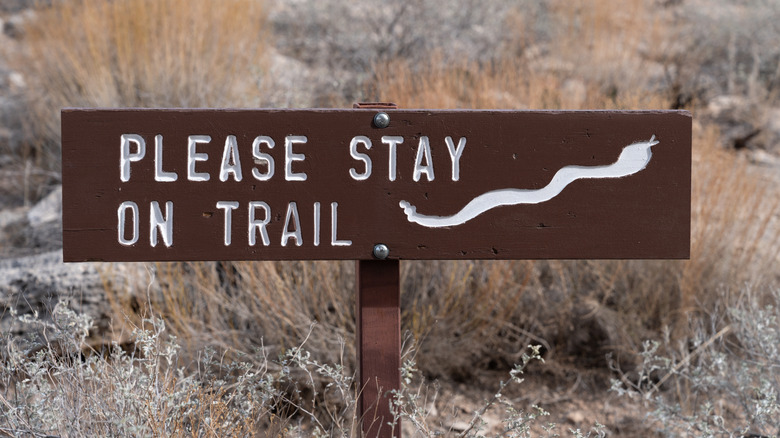One State Out West Has More Rattlesnakes Than Any Other. Here's The Unsettling Reason Bites Are On The Rise
Although old Western movies may paint a different picture, you don't have to be a cowboy camped out in the desert to get bitten by a rattlesnake. Unfortunately for those planning a visit to the Grand Canyon State, Arizona is home to a whopping 17 of the over 30 different rattlesnake species native to the U.S. Although it's impossible to say exactly how many snakes are slithering around, Arizona has nonetheless earned the title of being the most rattlesnake-infested state in America.
In more bad news for the snake-adverse, rattlesnake bites are on the rise in Arizona. Geoffrey Smelski, the director of the Arizona Poison and Drug Information Center, shares, "I think we're up to about 33 so far this year, which puts us a couple ahead of last year, which was our prior record" (via KOLD News). For reference, there were just over 180 reported rattlesnake bites in 2024, according to the Arizona Poison and Drug Center's annual report.
The reason rattlesnake bites are currently on the rise is due to people and snakes occupying the same spaces. As Arizona's demand for housing increases, many homes are being built in desert landscapes that are home to a variety of wildlife. Specifically, when new housing developments expand into previously wild areas, rattlesnakes look for shade at people's residences, including under decks and in gardens, entryways, crawlspaces, or anywhere else that's comparatively cool. This is particularly the case in Pima County, home to Tucson, where more than half of Arizona's 2025 rattlesnake bites have occurred.
Should you consider rattlesnakes when planning a trip to Arizona?
While you should factor rattlesnake safety into your travel plans in Arizona (or anywhere else with a large snake population), it shouldn't put a damper on your trip. Most bites occur during the warm months from April to October, when rattlesnakes are the most active. For instance, Arizona experienced the highest number of bites between August and September in 2024.
It shouldn't come as a surprise that the majority of Arizona's rattlesnake bites happen at personal residences, not while hiking or out in nature. In fact, none of Arizona's most snake-infested lakes can be found in bite-heavy Pima County. Rattlesnakes are shy creatures that generally avoid humans unless they feel threatened or surprised. However, this doesn't mean you should hit the trails without care.
Be mindful of where you're stepping and listen for the snake's telltale rattle. If you hear it, slowly move away from the snake. In addition, don't put your hands in places you cannot see while hiking or gardening, and always seek medical attention after a bite. If your snake phobia is particularly strong, consider a trip to Iceland, as it's one of the world's only snake-free countries. If your travels stay domestic, avoid Lake St. Clair and other snake-filled lakes in Michigan.

